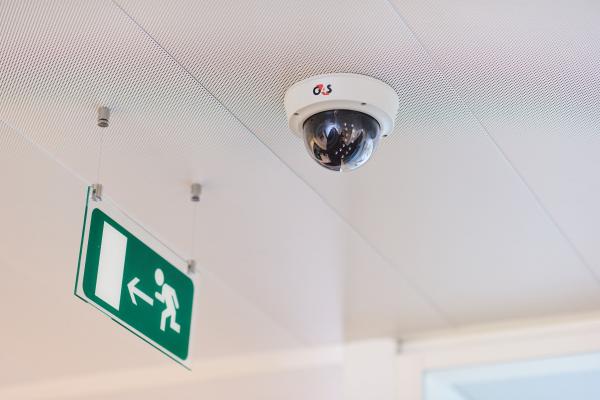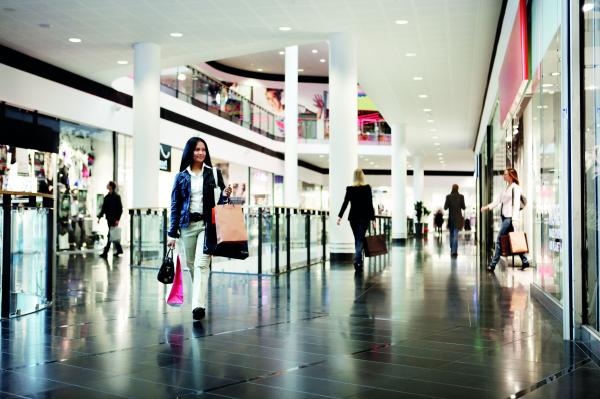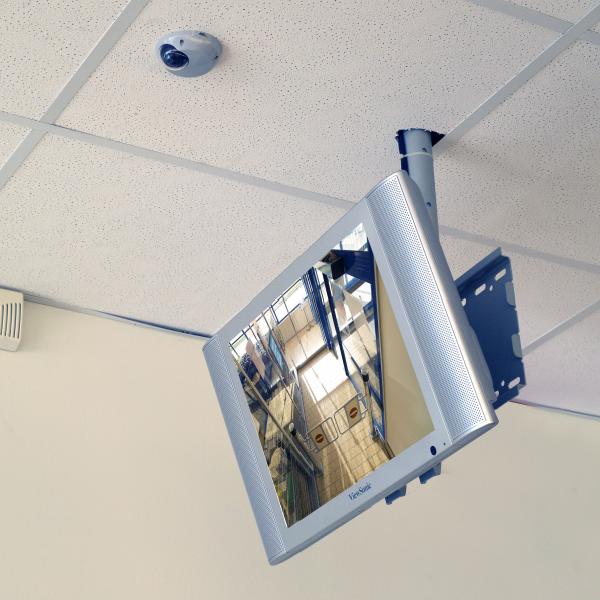HOW MODERN ELECTRONICS STUDY SHOPPER BEHAVIOUR
Eurocis 2018: instore analytics

Digitally based in-store analytics can provide retailers with valuable control and comparative data on individual outlet performance, the attraction of ranges and the impact of in-store displays for controlling the success of their marketing measures. The data required is furnished by modern IP cameras and smart evaluation programs. At EuroCIS 2018 in Düsseldorf the exhibitors will show what is feasible today.
Cameras in retail stores are calmly ignored. According to a study carried out by the EHI Retail Institute, Cologne, some 84% of the shoppers surveyed have an impartial attitude towards CCVT. Just under 12% even consider their use positive or very positive. These figures relate to Germany and in other countries the acceptance rate was sometimes even higher. So retailers investing in CCTV systems do not have to expect negative feedback. “Shoppers increasingly realise that such systems also serve their own security," concludes EHI expert Marco Atzberger.
However, state-of-the-art cameras can do much more than just discourage shop lifters or burglars and help identify them. In conjunction with smart software they also make it possible to analyse shoppers' behaviour in detail. Such systems can indentify car number plates on the parking lot, for example, and give retailers an idea about their current catchment area thereby making marketing plans more effective. They can count shoppers on the retail space making it possible to determine the conversion rate and initiate targeted measures for improving the footfall-purchase ratio. They follow shoppers' paths and generate heat maps of the individual store zones, thereby producing a clear picture of the number and residence time of shoppers in individual store areas. On the basis of this data shopping paths can be better controlled and campaign zones can be positioned in optimum locations.
Camera Captures Mood and Inclination to Buy

Furthermore, it is possible to identify groups of shoppers by gender, age and other criteria. This way ranges and campaign offers can be especially geared to the shopper structure. Some service providers are already experimenting with “affective computing": here camera sensors capture shoppers' facial expressions and gestures with a view to making evidence-based statements on their current state of mind and mood for shopping. And finally: by facial recognition these cameras can identify registered regular customers in order to welcome them to the store with a mobile phone message or to upload shoppers' data to sales assistants' tablets for a targeted sales conversation.
At EuroCIS 2018 a multitude of technical solutions will be presented to do this. The focus will be on state-of-the-art IP camera technology and its versatile possibilities. It is gradually replacing the photoelectric barrier, radar or laser technologies used in retail for years, but only for frequency detection. “New investment is limited almost exclusively to camera technology," observes Ralph Siegfried, Consultant Business Development Retail at Axis Communications GmbH.
Initial Trials and Practical Applications
However, Instore Analytics on the basis of (3D) IP cameras is still a relatively young discipline, so far predominantly operated by physical retailers for stand-alone projects. Retail trade visitors can find out about the first insights gained and application examples at EuroCIS. In a jewellery and accessories store fitted with IP cameras by Axis, for example, the redecoration and new placement of specific products was studied. To this end a pre-defined display area was captured for two days before and after the redecorating job with a time-lapse camera. The evaluation showed a clearly improved conversion rate that is the number of purchases made as a function of the number of shoppers showing an interest in buying the displayed products.
Another example: a camera is mounted in the window of a fashion store and measures the frequency of passers-by. Another camera measures visitor footfall at the store entrance. This allows the so-called capture or fishing rate (i.e. the ratio of visitors vs. passers-by) to be determined. Software by Dilax GmbH analyses these parameters over time thereby allowing conclusions to be drawn for shop window design. “Regarding performance indicators one should focus on two strategic variables the capture rate and the conversion rate," says Carolina Hinrichsen, Head of Sales at Dilax.
Store Analytics applications also include the precise localisation of shoppers on the retail space. This allows retailers to generate revealing heat maps shoppers' paths through the store can be followed down to precise shelf and product. On top of this it is possible to communicate via video clip or text message in real time with the specific shopper in a specific place, looking at a specific product. Pyramid Computer GmbH will present a corresponding ultrasound-based solution at EuroCIS.
Analytics must be Linked with Internal Data

Store analytics aim to get to know shoppers and their behaviour at the store better. This enables bricks-and-mortar retailers to compensate for the disadvantages they suffered versus E-commerce so far. After all, online dealers generate extensive data on their visitors and their customer journey even though their residence time is short. In this way they can constantly optimise ranges and services and above all personalise ranges, targeting specific customers and groups of shoppers.
Store analytics tools help over-the-counter retailers to catch up on this headstart but only if they take a conceptual approach and are prepared to invest in technology and human know how. “A consistent overall concept for all application areas is needed," adds Ralf Schienke, Sales Manager Retail Germany at Fujitsu. With “Retail Engagement Analytics" Fujitsu will exhibit comprehensive analytics software at EuroCIS that is not confined to one specific technology but capable of linking WiFi with camera data or sensor data with POS transactions.
In the final analysis professional store analytics will become a big data project. “To obtain an evidence base for shopper-related management decisions sustainably, the insights gained through in-store measurements must be combined with check-out data, merchandise information system data, CRM data, webshop data and externally generated reference data," says EHI expert Marco Atzberger.
EuroCIS 2018 in Halls 9 and 10 of the Düsseldorf Exhibition Centre will be open to trade visitors daily from Tuesday, 24 February 2018 until Thursday, 1 March 2018, from 10.00 am to 6.00 pm. Day tickets are EUR 30 (EUR 20 online in advance), and two-day tickets are EUR 45 (EUR 35 online in advance). University students and trainees pay EUR 12.00. Each ticket includes free transport to and from Düsseldorf Exhibition Centre on local VRR buses, trams and trains.
